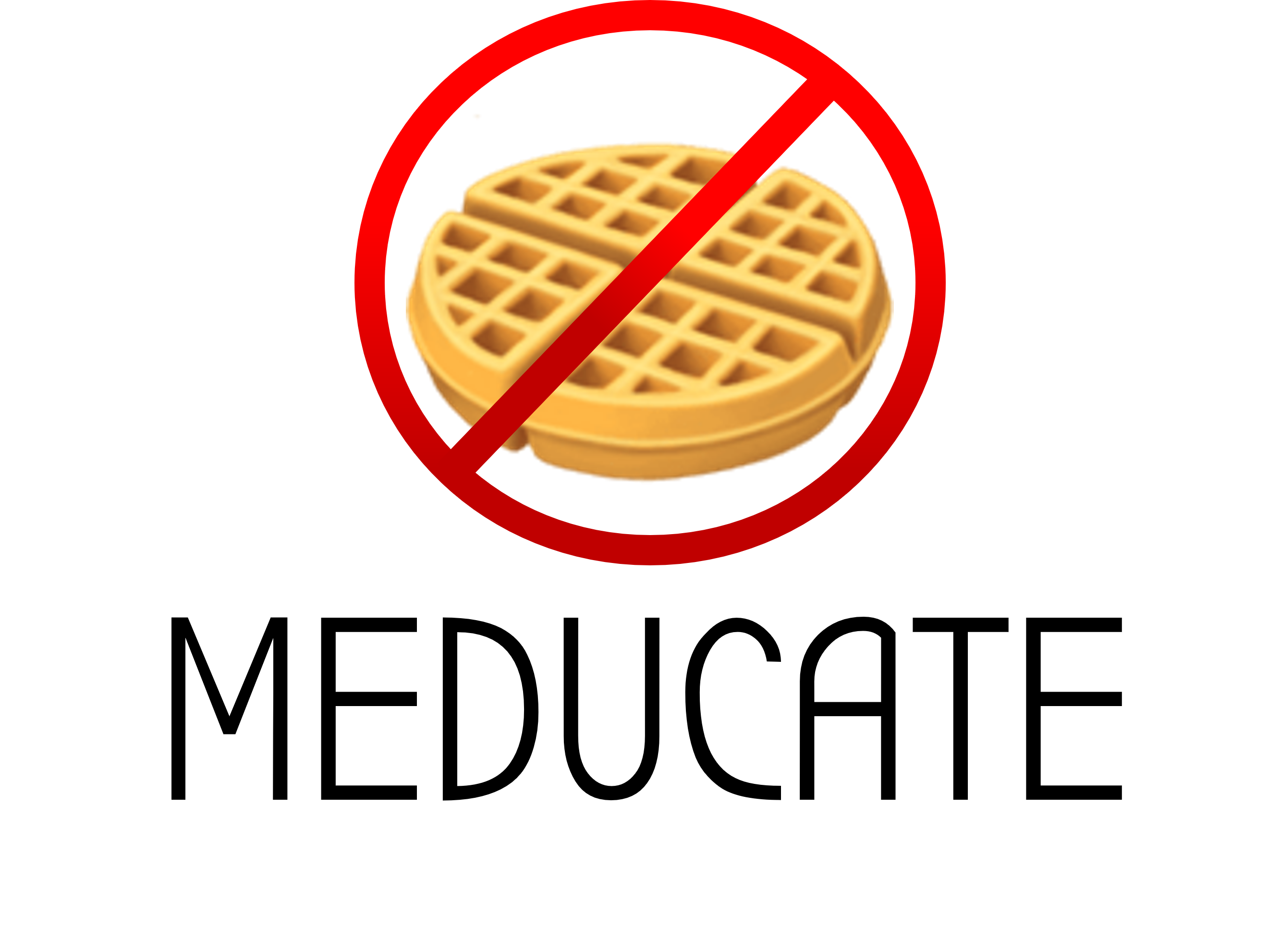 Notes: nsb neuroanatomy brain & spinal cord
Notes: nsb neuroanatomy brain & spinal cord
Similar resources:
- All
- CPSA
- Lecture Notes
- Videos
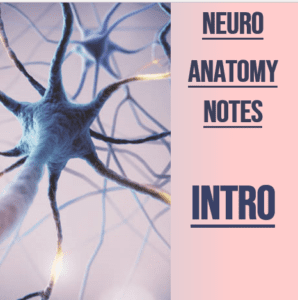
NSB Neuroanat Notes: Introduction
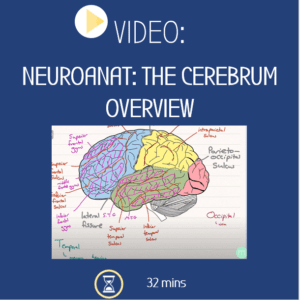
NSB: Cerebrum

NSB Neuroanat Notes: Forebrain 2
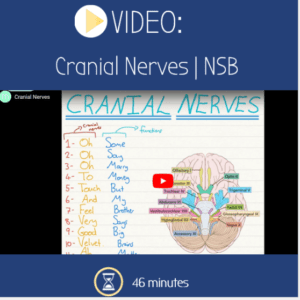
Video: Cranial Nerves | NSB
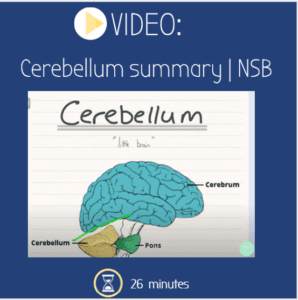
Video: Cerebellum Overview | NSB
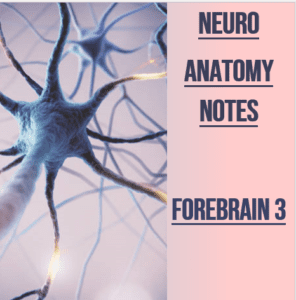
NSB Neuroanat Notes: Forebrain 3
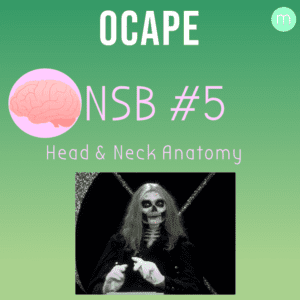
Y2 OCaPE: NSB 5 Head & Neck Anatomy
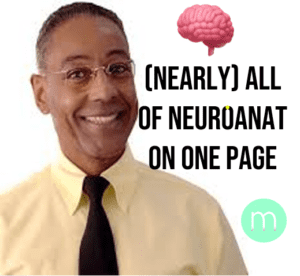
Neuroanatomy Summary

Video: Circle of Willis Summary | NSB
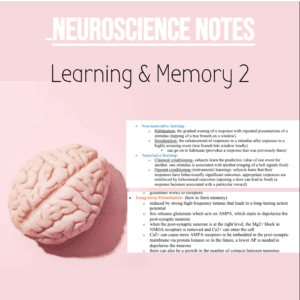
NSB Neuroscience Notes: Learning & Memory 2
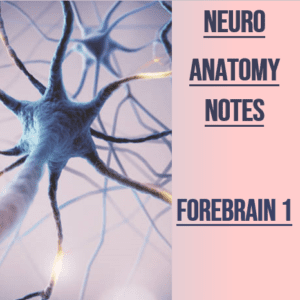
NSB Neuroanat Notes: Forebrain 1
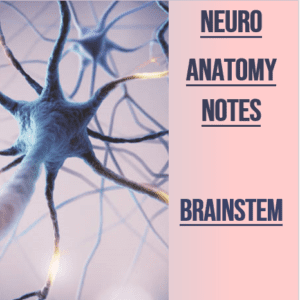
NSB Neuroanat Notes: Brainstem
Y2, Y2Notes, Y2 NSB, Y2NeuroAnat neuroanatomy Patrick anderson
Neuroanatomy: Forebrain 3
Thalamus:
• all input sensory information (except olfaction) goes to the thalamus, which
organises it to what is important and what can be ignored
• Thalamic Nuclei:
o Anterior nucleus- connected to the hippocampus and is related to
memory
o Dorsomedial nucleus- emotional behaviour and memory
▪ amygdala → dorsomedial nucleus → prefrontal cortex
o Ventroanterior nucleus- motor functions
▪ dentate nucleus in cerebellum → medial segment of globus
pallidus → ventral lateral and ventral anterior nuclei of thalamus
→ motor and premotor cortex
o Ventrolateral nucleus- motor functions
▪ dentate nucleus in cerebellum → medial segment of globus
pallidus → ventral lateral and ventral anterior nuclei of thalamus
→ motor and premotor cortex
o Ventral posterior nucleus- relay station for somatosensory information
to the somatosensory cortex (medial lemniscus and spinothalamic tract)
▪ Somatotopic map of VP nucleus:
▪ Ventral posteromedial nucleus- head and mouth sensory
▪ Ventral posterolateral nucleus- limbs and body
o Pulvinar nucleus- process visual stimuli
o medial geniculate nucleus- auditory stimulus (Music, Medial)
▪ cochlear nuclei → inferior colliculus → medial geniculate nucleus
→ primary auditory cortex
o lateral geniculate nucleus- visual stimulus (Light, Lateral)
▪ optic nerve → lateral geniculate nucleus → area V1/17. calcarine
cortex
o Intralaminar nuclei- relays limbic, sensory, motor signals to the cerebral
cortex
▪ somatosensory pathways enter the brainstem reticular formation
→ intralaminar nuclei of the thalamus → striatum + neocortex
• damage to the thalamus:
o damage to the somatosensory nuclei can cause thalamic syndrome
(posterior cerebral artery)
o pain from contralateral side (can be so severe it causes suicide)
Neuroanatomy: Forebrain 3
Hippocampus:
• needed for memory
• place cells, grid cells, head-position cells (help to know positions of places)
• dentate gyrus- where sensory information merges together (role in learning
and memory)
• entorhinal cortex- pathway for information to enter and exit the hippocampal
formation
• fornix- connects mammillary bodies and hippocampal formation (cholinergic
axons)
• Circuit of Papez:
o used to create episodic memory (memory associated with a time or
place)
o bilateral damage causes loss of episodic memory
• Kluver-Bucy Syndrome:
o cut temporal lobes bilaterally- affected amygdala
o profound amnesia
o hypersexuality
o placidity
o taste everything
o visual agnosia (loss of visual association cortex)
• Korsakoff’s Syndrome:
o in alcoholics
o anterior thalamus nuclei degenerates
o profound amnesia, so makes up stories to fill in the gaps
• Hypothalamus:
o memory- limbic system
o hormones (neurosecretion from posterior pituitary, releasing factors
from anterior pituitary)
o regulates: sleep and wakefulness, body temperature, food intake, water
intake, sex and reproduction, direct stress response
o Regions of the Hypothalamus:
Neuroanatomy: Forebrain 3
▪ Anterior Region
▪ supraoptic and paraventricular nuclei – connections with
pituitary gland (ADH is made) and are neurosecretory.
PVN is needed for autonomic control
▪ suprachiasmatic nucleus- fibres from the eye to control
diurnal rhythms
▪ medial preoptic nucleus- makes gonadotropin-releasing
hormone (SDN- sexually dimorphic nucleus) growth is
regulated by testosterone exposure in utero. (bigger in
males than females) (relates to sexual behaviour and
partner preference)
▪ Tuberal (middle) Region
▪ arcuate nucleus- cells are sensitive to leptin, so controls
appetite
▪ ventromedial hypothalamus- lesion= hyperphagia
(causes obesity)
▪ lateral hypothalamus- lesion= aphagia (causes
starvation)
▪ Mammillary (posterior) Region
▪ posterior hypothalamic nucleus- thermoregulation
▪ anterior portion of nucleus mediates heat loss
(lesion causes hyperthermia)
▪ posterior portion of nucleus mediates heat
conservation (lesion causes hypothermia)
▪ mammillary nucleus- role in memory
▪ tuberomammillary nucleus- regulates wakefulness
▪ histaminergic neurones extend to most of the CNS
and regulate wake-sleep cycle
▪ antihistamines that penetrate the blood-
brain barrier are soporifics (make you sleep)
